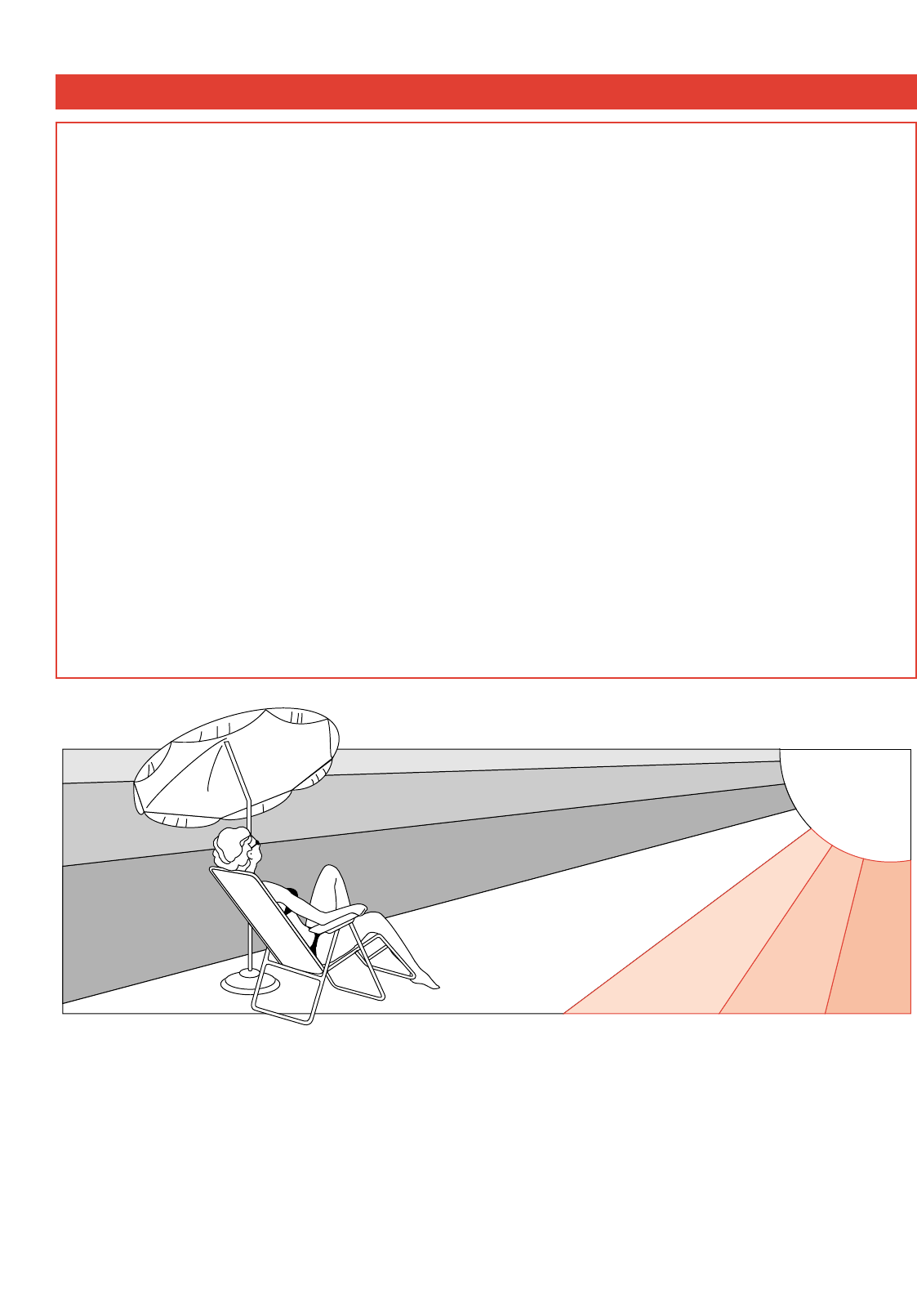
The sun is the source of energy on which all life on earth
depends.
There are various kinds of solar energy: the sunlight enables
us to see, we feel the warmth of the sunshine on our skin, and
under the influence of the sun our skin is tanned.
These three effects are due to three specific components of
the sun radiance spectrum, each of the components having
their own wave lengths.
The sun radiates electro-magnetic vibrations with widely
different wave lengths. The wave lengths of heat rays or
"infrared" (IR) are longer than the wave lengths of visible light.
And the wave lengths of "ultraviolet" (UV), which tans our skin,
are shorter than these.
Science has managed to reproduce these three kinds of solar
radiation: heat (e.g. Infraphil), light (lamps) and UV (solariums,
sun couches etc.)
UV-A, UV-B and UV-C
Ultraviolet (UV) is subdivided into UV-A (longer wave lengths),
UV-B and UV-C (shorter wave lengths).
UV-C seldom reaches the earth as it is filtered out by the
atmosphere.
UV-A and UV-B cause the tanning effect of the skin.
In fact there are two processes which produce tanning, and
they are simultaneously effective:
4
Important
• Before connecting the appliance to the mains
socket, check if the voltage indicated on the rating
plate corresponds with the mains voltage in your
home.
• Water and electricity are a dangerous combination!
Therefore, do not use the appliance in wet
surroundings (e.g. in the bathroom or shower, or
near a swimming pool).
• If you have just been swimming or have just taken a
shower, dry yourself thoroughly before using the
appliance.
• Take care that children cannot play with the Combi
solarium. As a precaution remove the plug from the
wall socket after use.
• Do not support the sun couch by any other method
than the legs supplied.
• Ensure that the mains cord does not get caught
under a supporting leg when placing the sun couch.
• Keep the ventilation openings in the solarium and in
the sun couch clear of obstruction when using the
Combi solarium.
• Do not exceed the advised session times or the
maximum amount of "tanning hours". (See section
"UV sessions: How often? And how long?")
• Do not select a shorter operational distance (i.e. the
distance between your body and the solarium) than
20 cm (approx. 8").
• Do not treat the body more often than once a day.
Avoid intensive skin exposure to natural sunlight on
the same day as a UV session.
• If you have any symptoms of illness, if you take any
medicines and/or apply cosmetics which increase skin
sensitivity, you should not have a UV-session.
Special care is also necessary in cases of pronounced
individual sensitivity to ultraviolet. When in doubt,
please consult your doctor.
• A Combi solarium is not to be used by people who get
sunburnt without tanning when exposed to the sun, by
persons suffering from sunburn, by children, or by
persons who suffer (or have previously suffered) from
skin cancer or who are predisposed to skin cancer.
• Consult your doctor if ulcers, moles or persistent
lumps develop on the skin.
• Always wear the protective eye goggles while tanning
to protect your eyes against excessive doses of
ultraviolet, visible light and infrared.
(Also refer to section "UV and your health".)
• Remove creams, lipstick and other cosmetics well in
advance of a UV session.
• Do not use sunscreen lotions or creams. Do not use
suntan lotions or creams either.
• If your skin should feel taut after the sun tanning
session, you may apply a moisturizing cream.
• Never use the Combi solarium if the timer or a
protective shield has become faulty.
• Colours may fade under the influence of the sun.
The same effect may occur when using the appliance.
• Do not expect the appliance to yield better results than
the natural sun.
English
UV C
UV B
UV A
VISIBLE LIGHT
INFRARED
The Sun


















